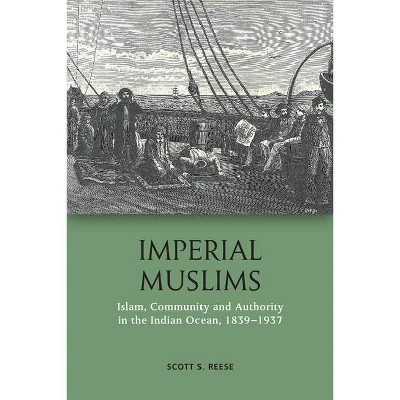Extinctus - by John Reese (Paperback)

Similar Products
Products of same category from the store
AllProduct info
<p/><br></br><p><b> About the Book </b></p></br></br>On Earth, 99% of species are extinct. Extinctus is a world where all vanished species live and die as they did when they inhabited Earth. The battle for survival occurs daily, as it did for millennium, in these hostile and violent epochs. Journey back in time to a world, one filled with fierce predators and harsh climates. Can modern humans survive in these inimical yet magnificent worlds? In Extinctus, the reader travels to three different time periods in the evolution of planet Earth. It takes the reader to the Paleocene Epoch (65-55 million years ago), the Miocene Epoch (23-5 million years ago) and the Pleistocene Epoch (2 million years ago-10,000 years ago). Based off the fossil record, each Epoch in Extinctus is a snapshot in time, a snapshot that reconstructs the emergence of the mammals, the insects, the climate, and the environmental changes over millions of years. How would modern humans fit into these violent worlds? During these expansive periods in geological time, Earth was full of monstrous predatory creatures. For millions of years, the planet stayed an extremely dangerous place for early humans. Extinctus brings to life the evolutionary plight of the mammals as they re-populate the Earth after the disappearance of the dinosaurs. Six humans must survive continual predation by an endless array of creatures as they try to survive in their new surroundings. Extinctus recounts the story of the youngest of three generations of humans to enter Extinctus. Can the youngest member of the family help save the human species? Or will Homo sapiens disappear from the record? With the help of magnificent creatures, with mysterious capabilities, known as Light Extinctos, can the humans thwart the sinister plan of Thylac, the Dark Extincto, who with the help of his delusional army seeks to destroy humanity?<p/><br></br><p><b> Book Synopsis </b></p></br></br>On Earth, 99% of species are extinct. Extinctus is a world where all vanished species live and die as they did when they inhabited Earth. The battle for survival occurs daily, as it did for millennium, in these hostile and violent epochs. Journey back in time to a world, one filled with fierce predators and harsh climates. Can modern humans survive in these inimical yet magnificent worlds? In Extinctus, the reader travels to three different time periods in the evolution of planet Earth. It takes the reader to the Paleocene Epoch (65-55 million years ago), the Miocene Epoch (23-5 million years ago) and the Pleistocene Epoch (2 million years ago-10,000 years ago). Based off the fossil record, each Epoch in Extinctus is a snapshot in time, a snapshot that reconstructs the emergence of the mammals, the insects, the climate, and the environmental changes over millions of years. How would modern humans fit into these violent worlds? During these expansive periods in geological time, Earth was full of monstrous predatory creatures. For millions of years, the planet stayed an extremely dangerous place for early humans. Extinctus brings to life the evolutionary plight of the mammals as they re-populate the Earth after the disappearance of the dinosaurs. Six humans must survive continual predation by an endless array of creatures as they try to survive in their new surroundings. Extinctus recounts the story of the youngest of three generations of humans to enter Extinctus. Can the youngest member of the family help save the human species? Or will Homo sapiens disappear from the record? With the help of magnificent creatures, with mysterious capabilities, known as Light Extinctos, can the humans thwart the sinister plan of Thylac, the Dark Extincto, who with the help of his delusional army seeks to destroy humanity?<p/><br></br><p><b> About the Author </b></p></br></br>John Reese studied Native American studies, ancient history and archaeology while attending Montana State University in Bozeman, Montana. While at Montana State, he was selected into advanced archaeology and went on to become an archaeological field supervisor for the university. John has spent decades studying the various time periods throughout the evolution of Earth. His focus is primarily on the time period after the K-Pg extinction event (around 65 million years ago) which wiped out the non-avian dinosaurs. His work explores the evolution of species on Earth after the extinction of the non-avian dinosaurs. The author's interest in the Earth's past started as a child. This curiosity began with the Time Life Nature Library book series he received as a young boy. One book, titled The Land and Wildlife of North America, depicted species during the middle and late Eocene (40 to 50 million years ago), the Oligocene (between 25 and 40 million years ago), the early Miocene (25 to 20 million years ago), and the early Pliocene (8 to 10 million years ago). Artistic re-creations of the above time periods brought to life visual images of various species of animals and plants and captured the environment in which they lived. This fascinated the author as a young child and would go on to be the foundation of Extinctus. What types of creatures rose to dominate the food chain after the disappearance of the non-avian dinosaurs and why did most fail? Each time period journeyed to in Extinctus is a snapshot in time, one in which the author attempts to re-create from the fossil record not only the species of the period, but the climate and geographical environments as well. The interior images in Extinctus are artistic recreations based on the fossil reconstruction of the species.
Price History
Price Archive shows prices from various stores, lets you see history and find the cheapest. There is no actual sale on the website. For all support, inquiry and suggestion messagescommunication@pricearchive.us




















